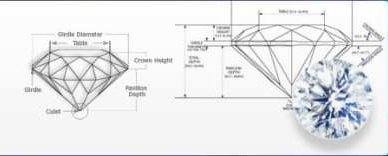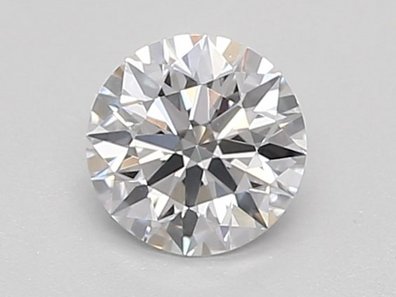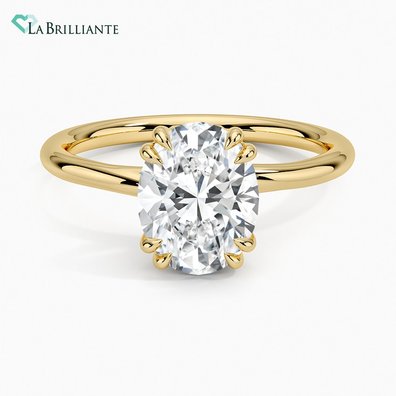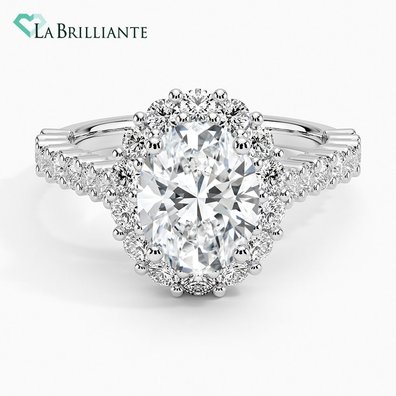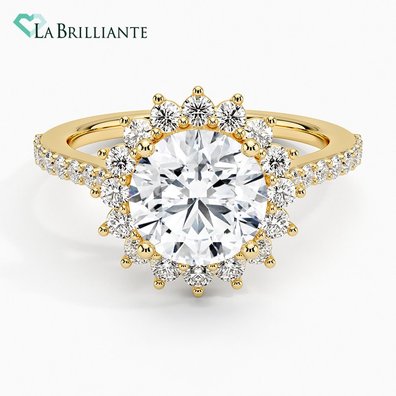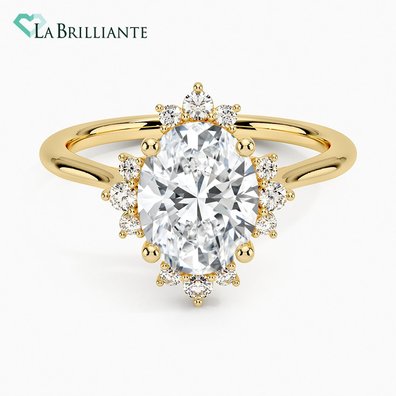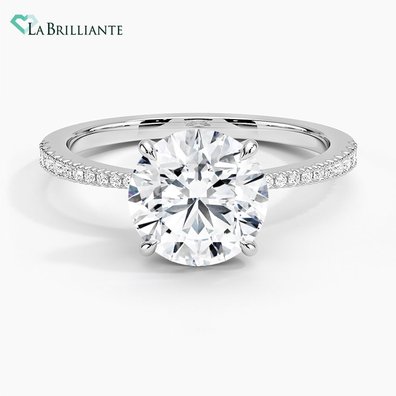The Best Lab-Grown Diamonds
Diamonds are a great choice for engagement rings because they show that you will love someone forever. When it comes to selecting that special ring to seal their marriage, younger couples are increasingly opting for lab-grown diamonds over mined gems. Cultured diamonds have the same sparkle as mined ones, but are created under precise laboratory conditions rather than being randomly formed underground. Moderators love their flawless design and ethical and eco-friendly production. Even though diamonds are still a couple's favorite symbol of forever, their origins are changing.
Introduction
Lab-created diamonds now outshine their mined counterparts, thanks to scientific innovation. Inside sophisticated laboratories, precise control of the production process yields stunning diamonds once considered unattainable.
This mastery over manufacturing parameters enables custom-designing diamonds to exhibit maximum brilliance through precision cutting.
Every buyer wants to find the best lab diamond in terms of quality to price ratio. Despite the different requirements for the perfect diamond, let's look at the parameters by which you can choose the best gemstone.
The Best Manufactured Diamonds According to the 4C
The 4Cs - color, clarity, cut, and carat weight - are the universal standards for assessing diamond quality. With lab diamonds, you have more control over each of these factors. Let's explore how to select the best lab grown diamond based on the 4Cs.
The Best Lab Diamond Color
Color is one of the 4Cs that determines a diamond’s quality, and with lab-grown diamonds, you can find exceptional color grades that are rare in mined diamonds. The best and rarest colors fall into the colorless or near-colorless categories. These diamonds face up white and show no hints of a yellow, brown, or gray hue. The very best lab diamond colors include:
- D, E, F Colorless. 100% colorless and extremely rare, even among lab diamonds. The most coveted colors
- G, H Near Colorless. Face up colorless unless compared side-by-side with better colors. Excellent quality.
- I, J Near Colorless. Face up colorless in most settings. Great value for a clean diamond.
Here are a few of the best-colored diamonds that can satisfy you. See all ⭢
Blue Lab-Grown Diamonds
Blue diamonds shine with endless azure allure - the calm, vivid blue of a cloudless sky or the deep blue of the sea's treasures. Mined blue diamonds are exceptionally rare, formed when boron atoms tint the crystalline lattice in exotic hues. Lab-grown diamonds mimic this enticing process, being vibrant blue homogeneous throughout each layer with no need for enhancement. Precision control of the growth environment gifts the gems color to rival even the rarest mined occurrences.
At Labrilliante you can order these exceptional diamonds. We specialize in producing diamonds in incredible blue hues.
Red Lab-Grown Diamonds
Red lab diamonds captivate with their alluring scarlet hue, beckoning the eye into fiery depths that glow as if lit from within. Their crystalline lattices house secrets in scarlet, defects deliberate and precise, bestowing enigmatic shades on these cultured gems.
True red diamonds are very rare. Their price proves equally exceptional, with mined specimens auctioning for up to millions per carat. Lab-grown counterparts deliver the same visual intrigue for a fraction of the cost.
Vivid Yellow Lad-Grown Diamonds
The vivid yellow of lab-grown diamonds holds the warmth of a golden sunrise - rich, radiant color saturating each atomically aligned layer. Mined yellow diamonds rely on the presence of nitrogen atoms to tint the lattice in pale to deep shades. Lab-grown diamonds instead achieve their golden glow through carbon in its purest crystallized form. Unadulterated by excess elements, vivid chroma saturates the gems with resplendent light from within.
The Best Lab Diamond Clarity
As the IF designation denotes, no inclusions or blemishes visible under 10x magnification reside. Moreover, the flawless FL grade signifies optical flawlessness when scrutinized by expert gemologists under any magnification or lighting environment. This complete absence of particulate clouds, feathers, pinpoints and crystals signifies the pinnacle of uniform faceting free from disruptive defects.
Owing to nature’s haphazard variables, barely one in every ten thousand rough diamonds achieves IF status, while FL persists as a near-impossible ideal outside human engineering. Thus, FL and IF gems command exceptional market value, sought-after for peerless light performance resulting from their pristine interior clarity.
By maximizing optical transmission and minimizing any obstructive imperfections, FL and IF diamonds unleash unmatched refractive spectacle through precisely calculated cuts.
Among the best are VVS and VS lab diamonds. VS (very slightly included) or VVS (very, very slightly included) diamonds contain only minuscule inclusions that are hard to see under 10X magnification. These make excellent, affordable choices, though IF still tops the list for perfection.
The Best Diamond Carat Weight
One advantage of lab-grown diamonds is the ability to produce them in carat weights unavailable with mined diamonds. You don’t need to go for max size to get the best laboratory diamond. Let’s look at the best carat options:
- Up to 0.50 Carat. Excellent sizes for accent diamonds, promise rings, and delicate jewelry. Offers good diamond spread at lower costs.
- 0.50-1 Carat. The classic engagement ring diamond size. Allows excellent cut grades while balancing size with price.
- 1-2 Carat. It makes a significant visual impact with its larger surface area. A great «wow» diamond.
- Over 2 Carat. Head-turning diamonds with exceptional sparkle. Perfect for anniversary upgrades or special occasion gifts.
If going the laboratory diamond route, don’t shy away from requesting stones just under magic retail weights (0.99 ct, 1.98 ct). You can save significantly compared to the full carat while getting essentially the same face-up appearance.

The Best Lab Diamond Cut
With laboratory diamonds, you have access to an array of shapes, from classic round and princess cuts to on-trend ovals and pears. Let’s highlight cuts perfect for the best sparkle:
- Round Lab-Grown Diamonds. As the most popular diamond cut, the round brilliant can't be beaten in its optical performance. With 58 mirrored facets, it shows unmatched fire and brilliance. Over 75% of lab diamonds sold are round cuts.
- Oval Lab-Grown Diamonds. One of today’s top trends, oval lab diamonds have a brilliant cut with elongated proportions. Their elongated shape can make hands appear slimmer.
- Princess Lab-Grown Diamonds. For those desiring a square silhouette, the princess cut offers sharp lines and corners that refract light powerfully. With excellent brilliance nearly on par with rounds, princess lab diamonds make striking centerpieces.
The bottom line is that while all these cuts can achieve excellent polish and symmetry grades, custom cutting is easier with lab diamonds. This allows for ideal angles and alignments for maximum light return and face-up beauty.
If you like unusual designs, choose rare diamond cuts.
The Best Manufactured Diamonds for Engagement Rings
When choosing a lab-grown diamond for an engagement ring, it's important to consider the style of the ring and how the diamond will complement it. Whether you're looking for the best lab-created diamond, there are many options to suit your unique style and budget. Here are some popular engagement ring styles and the best lab diamonds that work well with them.
For classic Solitaire engagement rings, a round brilliant or cushion cut diamond is a stunning choice. These shapes offer exceptional brilliance and fire, making them the perfect centerpiece for a solitaire setting. A carat weight of 0.75 to 1.5 carats is a popular range for solitaire rings, depending on your budget and preferences.
If you're choosing a diamond for a halo engagement ring, an oval, pear, or marquise cut diamond can create an elongated and elegant look. These shapes also tend to appear larger than their actual carat weight, making them a great choice for those looking to maximize the visual impact of their center stone. When searching for the best engineered diamonds for a halo setting, consider the overall quality and proportions of the center stone.
When it comes to choosing the perfect lab-grown diamond for a pave engagement ring, there are several factors to consider. Round brilliant cut diamonds are the best choice for pave settings, as their symmetrical shape and excellent light performance complement the ring's design. However, other shapes such as cushion, oval, and princess cuts can also work well in pave settings, depending on your personal style and preference.
In pave settings, the diamonds used are typically smaller, ranging from 0.01 to 0.20 carats each. Consistency in size is crucial to creating a uniform, seamless appearance. Choosing lab-grown diamonds within this range will ensure a beautiful pave design without compromising on quality or breaking the bank.
How to Choose the Best Lab-Created Diamonds?
Choosing the best lab-grown diamond for your jewelry involves careful consideration of several factors. To ensure you find the perfect lab-created diamond that meets your expectations and budget, follow these steps:
- Determine your budget. Before diving into the world of lab-grown diamonds, it's essential to establish a clear budget. Lab-created diamonds are generally more affordable than mined diamonds, but prices can still vary significantly depending on the diamond's quality, size, and shape. Having a budget in mind will help you narrow down your options and make the best decision for your financial situation.
- Consider the 4Cs. Prioritize the factors that are most important to you, such as a higher cut grade for maximum brilliance or a specific carat weight to achieve your desired size. Keep in mind that balancing the 4Cs can help you find the best value for your budget.
- Choose the setting style. Consider the shape that best suits your personal style and the type of jewelry you're creating. Additionally, think about the setting style, such as a solitaire, halo, or pave, and how it will complement your chosen diamond shape.
- Select a reputable supplier. When purchasing a lab-grown diamond, it's crucial to choose a reliable and trusted supplier. Look for companies that offer high-quality, lab-created diamonds. Labrilliante offers a wide range of lab diamonds, competitive prices, and a commitment to sustainability and ethical practices.
Where to Buy the Best Lab Diamonds?
The best lab diamonds you can buy at Labrilliante. We produce certified diamonds of high quality. Our collection includes popular and rare colors and cuts. We will find the best diamond to suit your personal preferences.
Summary
When choosing the perfect laboratory diamond, remember that the best stone for you is the one that aligns with your personal preferences and budget. While diamond color is graded on a scale from D to Z, you don't need to spend extra money on a D color diamond. Depending on the setting, an H or I color diamond can appear just as clean and white as a colorless stone. Instead of focusing on the highest color grade, consider investing in factors that will enhance the diamond's overall appearance, such as a larger carat weight or a well-proportioned cut that maximizes brilliance.
Similarly, when it comes to clarity, a VS1 or VS2 diamond will often appear eye-clean, just like an FL diamond, but at a significantly lower cost. Rather than fixating on a specific clarity grade, prioritize finding a diamond that appears visually flawless to the naked eye.
The shape of your lab-grown diamond is a matter of personal taste. Round, oval, and princess cuts tend to offer the most brilliance, but you can also opt for any of the rare fancy shapes that speak to your unique style.
Ultimately, the key to finding the best lab-grown diamond is to strike a balance between the 4Cs (color, clarity, cut, and carat weight) that works for you. By focusing on your individual needs and desires, you can discover the perfect lab-created diamond that will shine as brightly as your love story.
If you are looking for something unique, contact us. We will offer not only popular shapes and sizes, but also rare laboratory diamonds.
FAQ
The best lab diamond colors are D, E, and F, which are considered colorless. G, H, I, and J color grades are also excellent choices, as they appear colorless to the naked eye and offer great value.
The best carat weight depends on your preferences and budget. Diamonds up to 0.50 carats are perfect for delicate jewelry, while 0.50-1 carat stones are classic choices for engagement rings. 1-2 carat diamonds make a significant visual impact, and stones over 2 carats are head-turning statement pieces.
Round, oval, and princess cuts are among the best choices for maximum brilliance and fire in lab-grown diamonds. These cuts feature ideal angles and alignments that optimize light return and face-up beauty.
To find the best engineered diamonds, look for reputable retailers that offer high-quality, certified lab-grown diamonds. Consider factors such as color, clarity, carat weight, and cut when making your selection, and choose a diamond that balances your desired characteristics with your budget.
The best grade of lab-grown diamonds is determined by the 4Cs: color, clarity, cut, and carat weight. The highest color grade for lab-grown diamonds is D (colorless), followed by E and F. The best clarity grade is IF (internally flawless), followed by VVS1 and VVS2 (very, very slightly included). The cut grade should be Excellent or Ideal for optimal brilliance and fire. When considering the best lab-made diamonds, prioritize stones with high grades in all 4Cs that fit within your budget.
The two primary methods for creating lab-grown diamonds are High Pressure High Temperature (HPHT) and Chemical Vapor Deposition (CVD). Both methods can produce high-quality diamonds.
Both IGI (International Gemological Institute) and GIA (Gemological Institute of America) are respected, independent gemological laboratories that grade diamonds. GIA is the most well-known and widely recognized authority in diamond grading, setting the standard for the 4Cs. IGI, however, has become a popular choice for grading lab-grown diamonds and is known for its expertise in this area. When shopping for the best lab-made diamonds, either IGI or GIA certification can provide assurance of the diamond's quality. Ultimately, the choice between IGI and GIA comes down to personal preference and the specific diamond you are considering.










